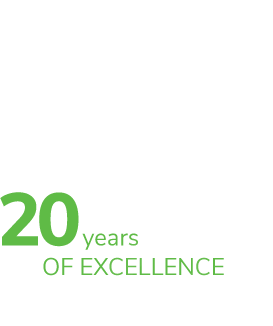As with any business and organizational process, a hiring process should also be efficient, with step-by-step instructions that include every best practice necessary to hire a new employee. This process can be unique to each organization, and each company should tailor the process to fit their needs and goals. The important thing is to have a formal process in place; one that helps ensure your company chooses an employee that offers the right fit for the culture and specifics of the position. Once that plan is in place, it’s important to identify ways to optimize your recruitment process to streamline or make it even more efficient.
The Basic Steps in a Recruiting Process
There are some key steps involved in a formal recruitment process. Generally, there should be three steps to this process.
#1: Planning Stage
In this first step, the company must consider what they need and are looking for in a new hire. This stage takes focused efforts to determine the company’s overall goals.
Some things to consider for your organization must include:
- The number of employees needed
- Which departments or positions to hire for
- The skill sets that each employee needs for various positions
Then, you must compare what your company needs to what is available in the labour market. During this process, it’s important to consider what will bring in the ideal candidate, such as the labour market’s rates, what benefits may be important, and what other offers you can present to a potential new hire.
Create job descriptions that outline what exactly you are looking for in a new employee. Be sure to do some research and study what other companies hiring in this field are doing. At the same time, be clear about the duties of the job and the skills required to do it well.
#2: Recruitment Stage
In this next phase, your company must set out to find the key employees you need to hire. This step includes reaching out to a pool of candidates through one or more methods. These methods may include:
- The use of ads
- Job referrals
- Job postings on employment websites
- Recruitment and staffing companies
The recruitment step also includes setting up interviews and bringing people in to identify how well they may meet the expectations and needs of your company. Your recruitment team may also perform screenings, including background checks and referral calls to evaluate each candidate.
With interviews, set up a formal process before you begin bringing people in. What questions will the hiring manager ask? What information do you need to know? What about cultural fit? Outline the specific components of this process now.
#3: Employee Hiring
Once a group of prospective employees has been selected, it is necessary to evaluate options and generate a hiring list. Finally, your company must decide who to hire.
The hiring process leads to the onboarding process, which includes receiving acceptance of the position from the employee, filling out paperwork for employment, and setting up payroll. It may also include introducing the individual to the company, providing training, and setting them up for success.
While this process works well for most jobs and companies, you may need to team up with a specialized recruitment agency to fill positions requiring high levels of responsibility such as managers, directors, and vice-presidents. These recruitment and talent acquisition specialists will select the best candidates for the position based on their qualifications. They will also make sure that the candidate will fit well into your company’s culture and meet your needs. Once this selection of ideal candidates is made, all that remains is for you to conduct the final interviews and make the final choice.
Process to Optimize Recruitment
Each new hire needs to be the best fit for a company, especially in a challenging labour market when top talent is critical to ensure top performance. By adopting best practices that optimize your recruitment process steps, it’s possible to improve efficiency and enhance your organization’s overall performance. To do that, consider these tips.
Improve Job Descriptions
Job descriptions are an important first step in the communication process. Check that they are clear and outline what the candidate needs to know thoroughly. This includes what the position is, the duties of the job, the expected skills for a new hire, and the overall goals of the position. Then, list out the benefits that fitting employees receive. Work with a professional recruiter to help you create descriptions that really stand out without being unclear or (even worse) misleading.
Create a Strong Employer Brand
Having a strong employer brand is critical in today’s market. Long before an individual applies for a job position, they research what others say about the company. They want to know the good and the bad. Having a strong employee-first brand in place lets the prospective employee know just what to expect.
Review Your Employee Value Propositions
An employee value proposition should be clear and answer the question, “What’s in it for me?” This should include both monetary and non-monetary benefits the organization provides to the employee based on skills and experience that person brings to the table.
Use Social Media Platforms to Recruit
Be active and engage in the hiring process. To do that, use social media platforms such as LinkedIn, Twitter, and Facebook, to help find talent. Today’s candidates may not come to you or see your ads without engaging socially with them.
Improve Interviews
Interviews are a good way to get information about the candidate and consider cultural fit within the company. It’s also important to make an interview more of a two-way conversation. The goal should be to get the candidate to open up and share useful and relevant information about themselves. Interviews should be more than a set of questions; they must be interactive and productive conversations.
Be Quick and Efficient
It can take a long time to post positions and work through the interview process. Yet, worthy candidates don’t sit around and wait for someone to offer a position a few weeks or months down the road. Try to be quick about the entire process. This process may help you to land the talent you need in a dynamic market. Don’t hesitate to work with a talent acquisition specialist to optimize your existing recruitment process.
When companies optimize their recruitment process, they gain better visibility in a crowded job market. Your organization can do the same in order to weed out applicants that may not fit the bill early on, saving time during the interview process and avoiding later problems associated with unsuitable hires.
Conclusion
An optimized recruitment process will help you hire the best candidates for the positions you need to fill. Because they will have been carefully selected, these candidates will be able to contribute to the growth of your company.
As accounting and finance recruiters in Montreal, Exceleris helps employers with their recruitment process. Our talent acquisition specialists can provide you with outstanding support and help you optimize your recruitment process. Our services include helping your team with writing job descriptions, attracting, and selecting candidates, and more. Contact us to learn how we can help you manage this process efficiently.




